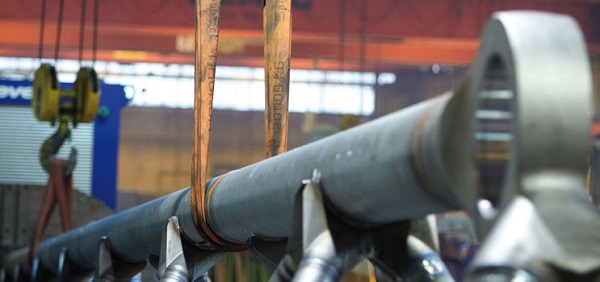Lifting sling
Contents |
[edit] Introduction
A lifting sling is used with a lifting device or crane to lift objects effectively and safely. Slings usually consist of cable, chain, rope or webbing, and generally include metal devices such as hooks, shackles, links or rings. Different types of sling are appropriate for different applications, depending on their composition, working load, length, slinging mode and so on.
[edit] Types of sling
[edit] Nylon
Nylon slings are strong, dense and flexible; they will stretch by approximately 6-8% of their length. However, nylon can absorb liquid, which can affect its strenght.
[edit] Polyester
Polyester slings are are known as 'web slings' or 'rigging slings' because of their synthetic, web-like composition. Polyester differs from nylon in that its stretch is approximately 3%, and it is safe for use where bleaching agents or acids are present.
[edit] Wire rope
Wire ropes are categorised based on the number of wires in a strand and how many strands are wrapped around the core. The more wires there are, the greater the flexibility and resistance to kinks, but also the more liable they are to abrasion wear.
[edit] Chain
Chain slings are typically suited to more demanding lifting operations. They are usually constructed from Grade 80 or 100 high strength alloy steel and can be designed and fitted to create custom sling assemblies for almost any kind of lift.
Chain slings should be stored in a dry and clean area to avoid damage, rust and corrosion. They should be regularly inspected for defects, including:
- Wear and stretching.
- Bent or twisted links.
- Ineffective safety catches.
- Cuts and nicks.
- Gouges.
- Heat discolouration and welding splatter.
[edit] Related articles on Designing Buildings Wiki
Featured articles and news
Latest Build UK Building Safety Regime explainer published
Key elements in one short, now updated document.
UKGBC launch the UK Climate Resilience Roadmap
First guidance of its kind on direct climate impacts for the built environment and how it can adapt.
CLC Health, Safety and Wellbeing Strategy 2025
Launched by the Minister for Industry to look at fatalities on site, improving mental health and other issues.
One of the most impressive Victorian architects. Book review.
Common Assessment Standard now with building safety
New CAS update now includes mandatory building safety questions.
RTPI leader to become new CIOB Chief Executive Officer
Dr Victoria Hills MRTPI, FICE to take over after Caroline Gumble’s departure.
Social and affordable housing, a long term plan for delivery
The “Delivering a Decade of Renewal for Social and Affordable Housing” strategy sets out future path.
A change to adoptive architecture
Effects of global weather warming on architectural detailing, material choice and human interaction.
The proposed publicly owned and backed subsidiary of Homes England, to facilitate new homes.
How big is the problem and what can we do to mitigate the effects?
Overheating guidance and tools for building designers
A number of cool guides to help with the heat.
The UK's Modern Industrial Strategy: A 10 year plan
Previous consultation criticism, current key elements and general support with some persisting reservations.
Building Safety Regulator reforms
New roles, new staff and a new fast track service pave the way for a single construction regulator.
Architectural Technologist CPDs and Communications
CIAT CPD… and how you can do it!
Cooling centres and cool spaces
Managing extreme heat in cities by directing the public to places for heat stress relief and water sources.
Winter gardens: A brief history and warm variations
Extending the season with glass in different forms and terms.
Restoring Great Yarmouth's Winter Gardens
Transforming one of the least sustainable constructions imaginable.























